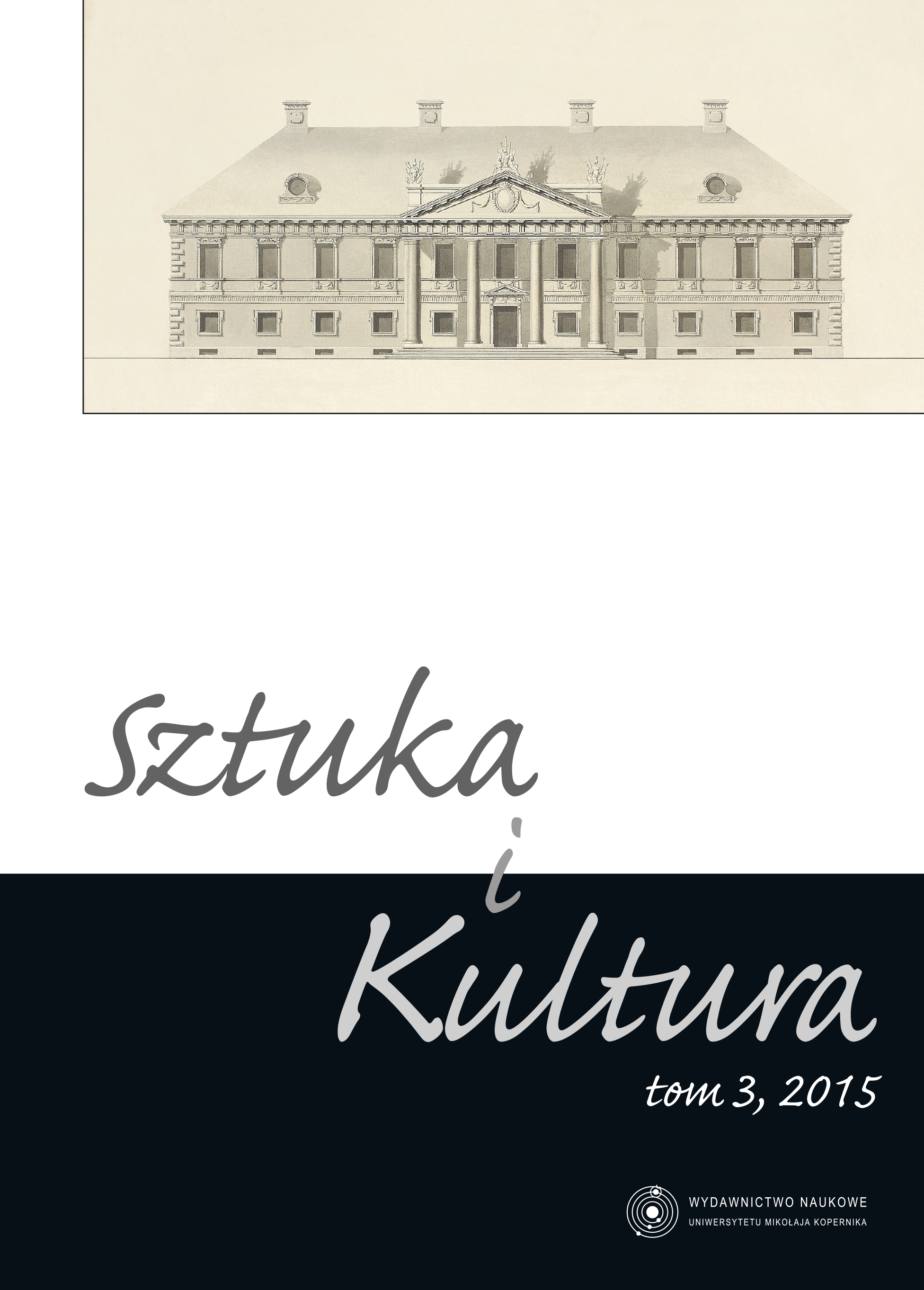The palace in Walewice and the palace in Mała Wieś: reflections on how – in the opinion of posterity – a disciple appropriated the masterpieces of his master, Stanisław Zawadzki
DOI:
https://doi.org/10.12775/SZiK.2015.006Abstract
The paper deals with two classicist residences located in central Poland. The one in Walewice was completed in 1783 for Anastazy Walewski, starost of Warka. and his wife Magdalena née Tyzenhauz. The other, in Mała Wieś, was erected between 1783 and 1786 for Bazyli Walicki, voivode of Rawa, and his wife Rozalia née Nieborska. Both palaces – basing on the opinion of Marek Kwiatkowski, expressed almost half a century ago – have been widely considered as first authorial works of Hilary Szpilowski (1753−1827). However, arguments for that statement are insufficient and weak. Seemingly it was not taken into account, were the attribution correct, that the architect must have created his best works at the very beginning of his career.
Documents preserved in the Central Archive of Historical Records in Warsaw, revealed recently, shed new light on the problem of authorship of both palaces, proving that Szpilowski indeed could not have been the designer of these structures. At the moment the plans for their erection were made, he was still a mid-course student that ‘learned a little of theory and how to draw the first three [architectural] orders: Tuscan, Doric and Ionic, but not the two others’. He has also just started to gain his experience at building sites, supervising works in accordance with the orders of his principal - Stanisław Zawadzki. More specifically, he spent nearly all the building season of 1783 − the crucial year for erection of both edifices – far away, overseeing another Zawadzki’s project, the barracks in Kamieniec Podolski (Kamianets Podilskyi). On the other hand, an archival source pertaining to the completion of Walewice palace in that very year, cited by researchers as key evidence confirming Szpilowski’s authorship, in fact cites his name, but – and this has been completely neglected until now – only as a builder (aedilis), and not as a designer (architectus). Such an information is provided also by other documents dealing with managing Zawadzki’s ‘factories’, apparently supervised by Szpilowski in 1781−1782.
Considering the stylistics of both palaces discussed here, they are doubtlessly works of the same author, a creative architect aiming at optimal solutions and perfect forms, namely Stanisław Zawadzki (1743−1806), who educated Szpilowski and then employed him. In 1783, the former’s professional career was developing dynamically in Warsaw, and it was that master who had appropriate knowledge and skills to design the buildings in question. Educated at the Accademia di San Luca in Rome (from 1775 its full member), and a laureate of Concorsi Clementini in 1771, he was familiar with antique, Italian and – more broadly – European architecture. He was also an independent, renowned and experienced building entrepreneur, cooperating with many different craftsmen active at building sites. The palaces in Walewice and Mała Wieś can be readily given to Zawadzki by comparing their designs (disciplined, plain but tasteful elevations and somewhat casual interior arrangement, adjusted to particular needs) with other edifices by the artist.
Stanisław Zawadzki’s hand may also be detected in several construction drawings for the palace in Mała Wieś, preserved in the collections of the National Museum in Warsaw, including both preliminary ideas and final forms of the residence. Although one of the sketches dated 1783 is signed by Hilary Szpilowski, in view of earlier cited arguments it may be assumed that it is only a copy of his superior’s designs; such copies obviously had to be made manually by many persons cooperating with the architect, as it was the only way of their multiplication. Although the stylistics of the drawn designs point without doubt to Zawadzki, he himself did not sign any similar works, as such practice was not common in the period of king Stanisław August.
With several circumstances speaking strongly in favour of Stanisław Zawadzki’s design with regard to the palaces in Walewice and Mała Wieś, it may be furthermore pointed out that past researchers in fact associated them indirectly with him (as well as with Szreger and the influence of Palladio), while erroneously citing the authorship of Hilary Szpilowski. One should recall here, by the way, that Andrea Palladio was a constant source of inspiration for Zawadzki.Downloads
Published
How to Cite
Issue
Section
Stats
Number of views and downloads: 798
Number of citations: 0



